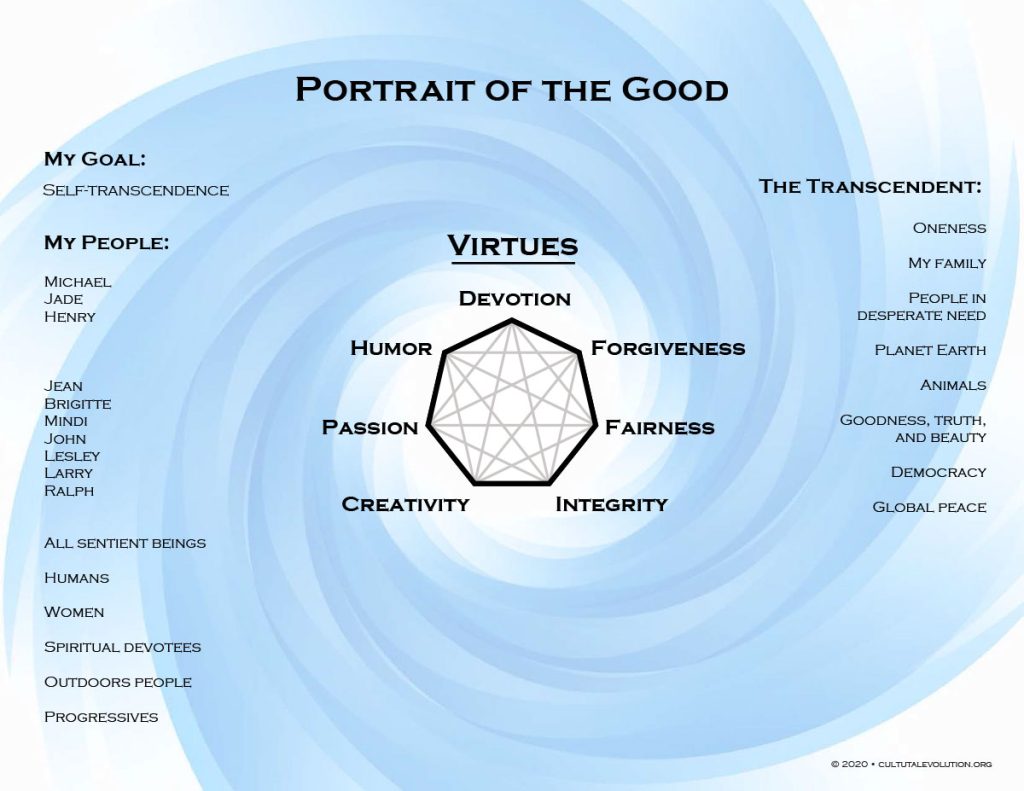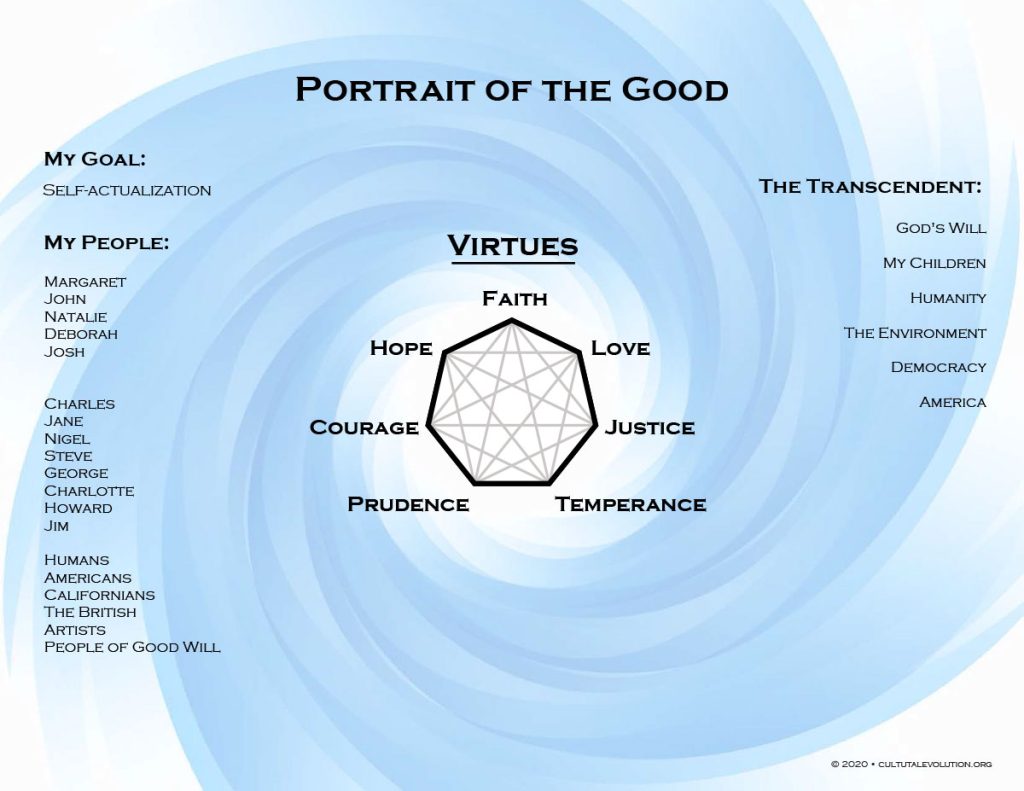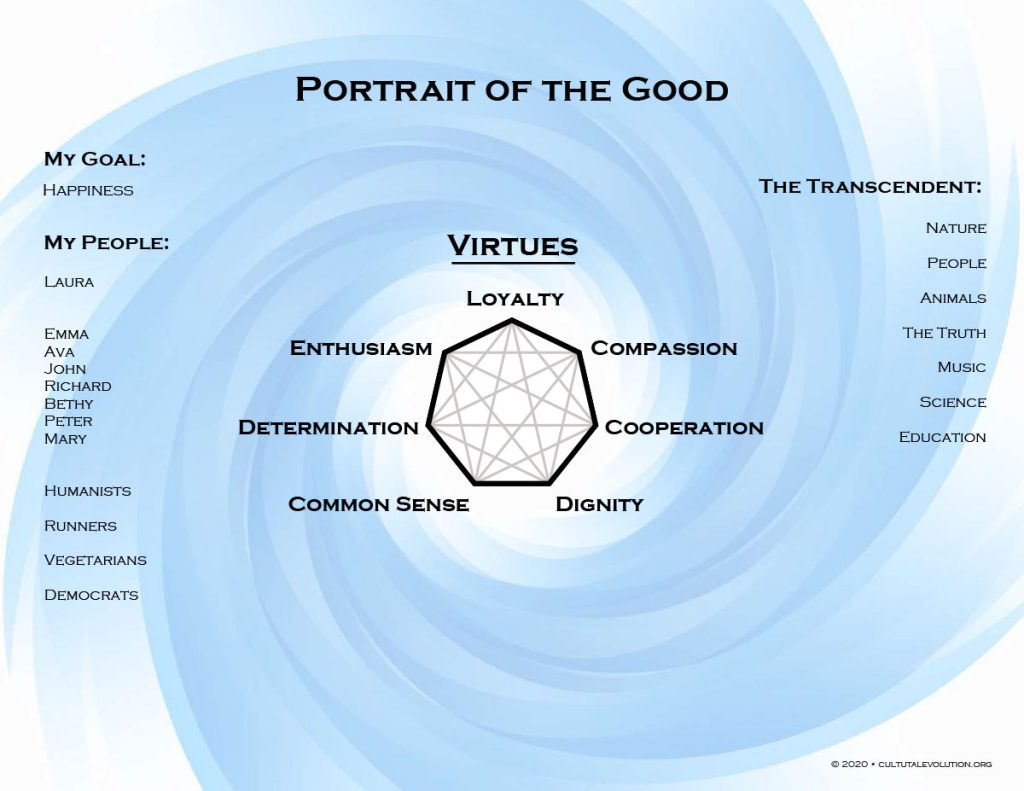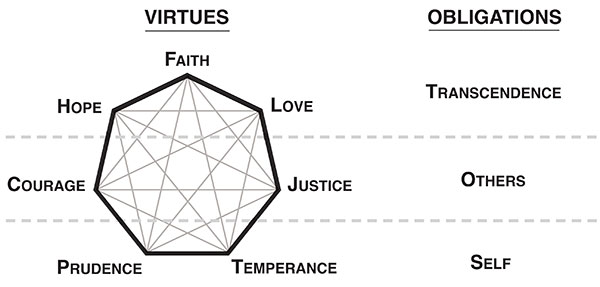K-12 Public Education in the U.S.

Overview of Our K-12 Public Education Policy Proposal
The heart of The Developmental Politics’ approach to all its political issue positions is a focus on development—the development of our collective culture, and the development of each individual person. Guided by this principle, we believe that the best education policy is one that empowers schools to foster the growth of each child’s “whole person,” thereby laying an educational foundation that can result in lifelong learning and continuing development throughout adulthood. This position paper, however, does not address the best way to educate children. Rather, it focuses on the politics of education and the best way to ameliorate the problems faced by America’s public school systems.
The Institute’s strategy for developing its overall platform of political positions is to identify existing exemplary approaches for each issue that can potentially deliver “wins” to all three major American worldviews. K-12 public education in America is beset by numerous problems (described below) which are unlikely to be solved through a single comprehensive policy proposal. Yet although we point to three distinct examples of promising education policies, each of which can improve public education in its own way, our first and most salient “win-win-win” example is found in the state of Indiana’s successful program of education reform.
In 2008, Indiana enacted a suite of reforms which: 1) equalized school funding disparities, 2) created robust school choice options, and 3) established state-wide accountability mechanisms. As a result of the synergy created by these three interdependent reforms, Indiana’s students have significantly increased their NAEP scores (National Assessment of Educational Progress).
As a supplement to our endorsement of Indiana’s comprehensive educational reforms, we also point to examples of educational innovations, which among other benefits, can improve American students’ lagging performance on the international PISA test (Program for International Student Assessment). And as a final example, we highlight “The Nordic Secret” known as Bildung education, which is a promising secular approach to moral education, character development, and patriotic civic education that can be adapted to American public schools.
Problems to be solved
Larger Social Problems Impacting Education
Some of the most difficult problems and shortcomings of K-12 public education stem from larger societal problems that are “upstream” from the education system. The larger social problems that most significantly impact education include:
- Poverty and family problems: “Credible studies have shown that low-income students tend to perform lower than affluent students and family income shows strong correlation with student achievement measured by standardized tests.”1
- Public sector union political power: Teachers unions have become publically funded left-wing advocacy groups.2These public sector unions negotiate collectively with public officials whom they have helped elect, and thus dominate the public education system by effectively sitting on both sides of the negotiating table. Using this power, teachers unions often block meaningful reforms and make it harder for school districts to dismiss ineffectual teachers.1
- School safety: Psychological insecurity resulting from mass shootings, the predation of gangs, and bullying.1
These issues will be addressed separately in other Institute for Cultural Evolution issue position papers. This position paper on education focuses on the following four problems, which are more specific to K-12 public education in the United States:
Problems Specific to the U.S. Public Education System
- Public school funding is often inadequate and unequal: U.S. public schools are primarily funded and managed by cities or counties, with funding coming from property taxes. This results in wealthy schools in some neighborhoods and poor schools in others.4 This disparity in funding contributes to overcrowding and the significant inequality of outcomes in K-12 public schools.
- American student performance and engagement lags internationally: The influential PISA test shows that U.S. education underperforms its international peers. The U.S. currently ranks 13th in reading, and 37th in math, respectively. “PISA reading and math scores for the United States have remained virtually unchanged since the early 2000s. … American students’ lagging performance on the PISA is attributable to an educational system—and accompanying assessments—that are narrowly focused on content outcomes, rather than on the ability to critically think through a problem and to apply new knowledge systemically.5 Moreover, there is a predictable and well-documented downward trajectory in engagement as students get older.”6
- Increasing ideological capture of the curriculum by progressive activists: Parents who do not identify as progressive, even liberal Democrats like journalist George Packer, are increasingly concerned about extreme “wokeness” in public schools, as exemplified by the widespread adoption of the 1619 Project curriculum. Packer’s 2019 Atlantic Magazine article, “When the Culture War Comes for the Kids,” describes his personal parental concerns that “teachers are telling kids what to think about society.”7 Conservatives are similarly alarmed, citing concerns that “one of the most liberal fields within university studies is education. And if progressives control the colleges of education, it should not surprise us that they also control the K–12 public schools.”8
- Lack of adequate civic and moral education and programs for character development: In a 2016 article in The Atlantic Magazine, educator Paul Barnwell concluded that: “The pressures of national academic standards have pushed character education out of the classroom.”9 More recently, a 2019 journalistic assessment of the state of character education in public schools found that: “Most public schools teach everything but morals. … Charter schools typically have more leeway to delve into character-based programs, whereas traditional public schools are more hesitant to delve into programs that could cause controversy. … In presenting a report on school safety commissioned after the 2018 shootings at Marjory Stoneman Douglas High School in Florida, federal officials said ‘our country’s moral fabric needs more threads of love, empathy and connection.’ The report’s first recommendation on how to achieve this: character education.”10
Wins Sought for Each Major Worldview
Because public education policy is severely impacted by the culture war, sympathetically overcoming political opposition to reform proposals is the first order of business. Which is why outlining an education “win” for all three worldviews is the primary focus of our proposal. A win-win-win policy for improving America’s K-12 public education system would ideally achieve the following wins for each worldview:
Progressivism’s wins
All children would have access to free, high quality public schools, regardless of their neighborhood. Inequitable school funding would be ameliorated. Low income and low education families would receive counseling to help them navigate the expanded school choice system and make the best choices for their students. Allowing non-progressive parents to easily opt-out of schools that do not reflect their values will empower progressive educators and administrators to include social and environmental justice issues in their schools’ curriculums. Implementing robust school choice will thus help bring peace to the raging culture war currently being fought over public education.
Modernity’s wins
Academic performance would increase. Standards of achievement and excellence would be maintained and adequately assessed. Greater school choice would increase accountability to parents and children within traditional public school systems. The federal government’s role in education would not expand.
Traditionalism’s wins
Children would have access to publicly funded education that is compatible with their family’s values. Public school funding would be controlled by families instead of the education bureaucracy. Expanded school voucher funding would put religious schools on an equal footing with progressive schools. The influence of the progressive moral system would be constrained on equal terms with the restraints placed on the traditional moral system in public education. Character education and civics education would be reinstated.
Examples of Potential Policy Solutions
1. Indiana’s combination of increased state funding, expanded school choice, and robust accountability for public and private schools
As reported by education analyst Dale Chu, in 2008, “Indiana began enacting a suite of reforms that resulted in a turn away from property-based school funding, and the establishment of robust choice and accountability mechanisms—not to mention higher NAEP scores.”11 First, Indiana eliminated its limit on the number of authorized charter schools. Then it capped homeowner property taxes while simultaneously raising the state’s sales tax. This move from local education funding to greater state-level funding helped finance Indiana’s expanded school choice voucher program.
“Notably, the state’s transition to a full-state funding model for K–12 public schools not only helped to create a more equitable funding system, it also created an environment more conducive to school choice within the public education system.”12 While the state’s assumption of full responsibility for school operating costs decreased local control of funding, it increased a more meaningful type of local control by giving parents the power to send their children to local public schools, to charter schools, or even to private (including religious) schools funded by its voucher program.
To ensure quality and accountability within its expanded system of publicly funded charter and private schools, Indiana adopted a universal school assessment program. “All non-public schools participating in the choice scholarship program receive a letter grade, and all students in private schools that participate in the voucher program—including those students who do not receive a voucher—are required by law to take state tests.”13 As a result of these state-wide reforms, Indiana’s students have significantly improved their academic performance.
“Indiana’s three key ingredients—the movement toward more of a state-based funding model, the expansion of public and non-public school choice, and a robust A–F accountability system that holds both private and public education sectors to account—is a rare triumvirate among states today.”14
Under Indiana’s program, the improvement of student test scores, coupled with expanded local control in the form of increased parental choices, provide wins for both modernist values and traditional values. And the equalization of school funding provides a key win for progressives. Moreover, while Indiana’s school voucher program seemingly favors modernist and traditionalist interests, this program also provides a win for progressives as a result of the educational pluralism it helps establish.
“Educational pluralism—a school system in which the government funds and regulates, but does not necessarily provide, public education—is the democratic norm around the world. The list of educationally plural systems is long, and it includes the United Kingdom, Hong Kong, Belgium, Denmark, Indonesia, Israel, Sweden, and France.” Alberta, Canada’s system provides a good example: “In the 1990s, Alberta equalized school funding to make it less reliant upon property values; expanded educational options to include (for instance) home schooling and First Nations schools alongside Catholic, Protestant, Jewish, and secular schools; and implemented a robust provincial curriculum that all students needed to learn. This curriculum can be delivered through distinctive school cultures and materials, but all students have to master the same information. Alberta is now one of the world’s highest-performing systems.”15
A policy that ensures educational pluralism through state funding of robust school choices can decrease the hotly contested culture war that is now being fought within many American school districts. Over the past few years, much of America’s education establishment has embraced a new kind of passionate concern for social justice. Many public school teachers and administrators are now dedicated to achieving the goals espoused by antiracist ideology. Parents who are politically progressive, or who otherwise share this ideology, apparently support this new emphasis on social justice. But parents who hold modernist and traditionalist worldviews are largely opposed to the teaching of identity politics in their children’s schools. This conflict has resulted in intense battles over local school board elections, as parents push back against progressivism’s increasing control of the curriculum.
Yet even though progressives usually oppose school choice, in light of current conflicts, such a policy can actually serve progressive interests. By allowing parents who object to social justice curriculums to easily opt-out by choosing schools that better reflect their values, progressive educators and parents can implement the progressive pedagogy they prefer with less objection or interference. A policy of educational pluralism can accordingly help alleviate the culture war within pubic education by empowering traditional parents to choose religious schools, empowering modernist parents to choose academically rigorous schools, and crucially, by also empowering progressive parents to choose schools that emphasize social justice. This expanded educational freedom would, of course, be constrained by both the U.S. Constitution, and a state’s annual academic exams, with acceptable performance on state assessments being required to maintain a school’s ongoing public funding and accreditation.
Will advancing educational pluralism create more polarization? Well, it won’t solve the problem of hyperpolarization, but it will help reduce the tension and deflect the battle away from children’s schools, which are the wrong place to fight the culture war. Eventually, as American culture evolves towards a new level of relative social solidarity, we hope to see schools emerge that can effectively accommodate families with diverse worldviews while also accomplishing educational goals. But until then, children should be insulated from the culture war through the implementation of robust school choice.
2. Examples of innovative approaches to education designed to remedy lagging student performance and engagement
Another reason to favor school voucher programs and expanded school choice is that it empowers educational innovation. By creating a competitive education marketplace, subject to quality control through annual academic assessments, education entrepreneurs can try innovative approaches, such as self-directed democratic schools,16 Socratic method schools,17 Paideia education,18 and the new approach known as “playful learning.” Playful learning, as advocated by The Brookings Institute’s Center for Universal Education, provides a good illustration of the promise of such innovative educational approaches.
In a 2020 report titled: “A new path to education reform: Playful learning promotes 21st-century skills in schools and beyond,” Kathy Hirsh-Pasek, Ph.D. and Helen Hadani, Ph.D. write: “American students’ lagging performance on the PISA is attributable to an educational system—and accompanying assessments—that are narrowly focused on content outcomes, rather than on the ability to critically think through a problem and to apply new knowledge systemically. Although we may have taught students to memorize information, they have not gained the critical skills to generalize and retain what they learn.”19 According to Hirsh-Pasek and Hadani, “playful learning” and “a breadth of skills” approach to education is a scalable, evidence-based education reform proposal that puts student engagement, educator expertise, and equity at its center. Playful learning is defined as “active, engaging, meaningful, socially interactive, iterative, and joyful,” all of which are evidence-based, malleable, and, to some degree, measurable.
3.Bildung education as a secular approach to moral education, character development, and patriotic civic education
The acclaimed 2017 book, The Nordic Secret,20 describes how the Scandinavian countries were transformed in the late 1800s from poor agricultural societies to Europe’s most advanced democracies in the course of several decades. The “secret” was the creation of nation-wide educational retreat centers where young people were taught the personal development principles of Bildung, which can be translated as: “transformative civic education.” Under this philosophy, “education becomes a lifelong process of human development, rather than mere training in gaining certain external knowledge or skills. Bildung … is a process wherein an individual’s spiritual and cultural sensibilities as well as life, personal and social skills are in process of continual expansion and growth.”21
The American version of Bildung education would include instruction in old-fashioned civics, with a focus on the principles and institutions of the American constitutional order. This proposed policy accordingly addresses the fourth public education problem identified above: Lack of adequate civic and moral education and programs for character development.
Notes
1. See: https://www.publicschoolreview.com/blog/the-15-biggest-failures-of-the-american-public-education-system citing: https://inequality.stanford.edu/sites/default/files/PathwaysWinter11_Evans.pdf
2. See https://www.cato.org/publications/commentary/teachers-unions-are-more-powerful-you-realize-may-be-changing. Citing:
https://www.educationnext.org/teachers-unions-post-janus-world-defying-predictions-still-hold-major-clout/
3. Pew Poll: A majority of U.S. teens fear a shooting could happen at their school, and most parents share their concern: https://www.pewresearch.org/fact-tank/2018/04/18/a-majority-of-u-s-teens-fear-a-shooting-could-happen-at-their-school-and-most-parents-share-their-concern
4. https://www.theatlantic.com/business/archive/2016/08/property-taxes-and-unequal-schools/497333/
5. Brookings Institute 2020 report: “A new path to education reform: Playful learning promotes 21st-century skills in schools and beyond,” https://www.brookings.edu/wp-content/uploads/2020/10/Big-Ideas_Hirsh-Pasek_PlayfulLearning.pdf
6. Center for American Progress 2019 report: “Elevating Student Voice in Education.”
https://www.americanprogress.org/issues/education-k-12/reports/2019/08/14/473197/elevating-student-voice-education
7. https://www.theatlantic.com/magazine/archive/2019/10/when-the-culture-war-comes-for-the-kids/596668/. See also: https://www.realclearpublicaffairs.com/articles/2020/07/16/critical_race_theory_in_k-12_education_498969.html
8. Quote from: https://teachdiligently.com/articles/progressivism-is-destroying-americaand-it-starts-in-our-schools. See also, the same concern expressed in The Atlantic Magazine article from March 2021: “What Happens When a Slogan Becomes the Curriculum,” https://www.theatlantic.com/ideas/archive/2021/03/should-black-lives-matter-agenda-be-taught-school/618277/
9. https://www.theatlantic.com/education/archive/2016/07/students-broken-moral-compasses/492866/
10. https://www.deseret.com/2019/2/22/20666520/most-public-schools-teach-everything-but-morals-is-it-time-for-this-to-change#marc-luthy-teaches-his-third-grade-class-at-noah-webster-academy-in-orem-on-friday-feb-15-2019-some-states-are-proposing-that-the-bible-be-taught-in-public-schools-not-for-moral-education-but-for-its-literary-and-historical-significance
11. Dale Chu, “Indiana’s funding, choice, and accountability reforms,” Thomas Fordham Institute, (December 5, 2019). https://fordhaminstitute.org/national/commentary/what-other-states-can-learn-indianas-funding-choice-and-accountability-reforms
12. Ibid.
13. Ibid.
14. Ibid.
15. Quote from: Ashley Rogers Berner, “The Case for Educational Pluralism in the U.S.” (July 11, 2019). https://www.manhattan-institute.org/educational-pluralism-in-united-states.
16. See Jim Rietmulder, When Kids Rule the School: The Power and Promise of Democratic Education (New Society Publishers 2019).
17. See https://socraticexperience.com/
18. See https://www.britannica.com/topic/paideia
19. “A new path to education reform: Playful learning promotes 21st-century skills in schools and beyond” https://www.brookings.edu/wp-content/uploads/2020/10/Big-Ideas_Hirsh-Pasek_PlayfulLearning.pdf
20. See Lene Rachel Andersen and Tomas Björkman, The Nordic Secret: A European story of beauty and freedom (Fri tanke, 2017).
21. Quote from the Wikipedia article “Bildung.” https://en.wikipedia.org/wiki/Bildung






I’m with Gav on this. And while this very good approach toward a foundational thorny issue of our day will land instinctively well with modern and traditional mindsets, it’s ambitious for most of what passes for “progressive” today. But pluralism as a value does speak to the best of what remains of a positive progressive mindset. It’s good to keep them in mind and in the game. Well done!
This is an awesomely encouraging article. To present non partisan balanced content is wonderful and then to add how this is beneficial to the three major worldviews is ground breaking. Please continue to publish these articles and I will do my meager best to promote them. Thank you.